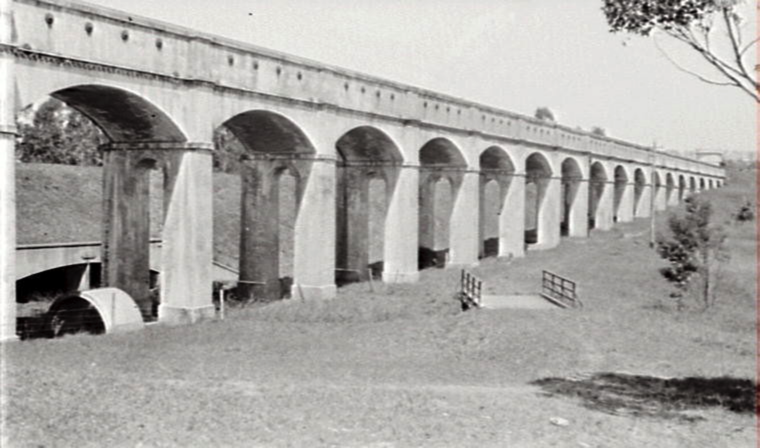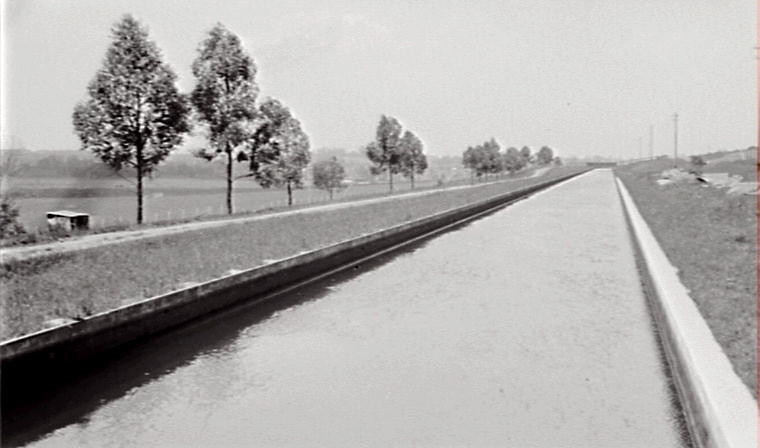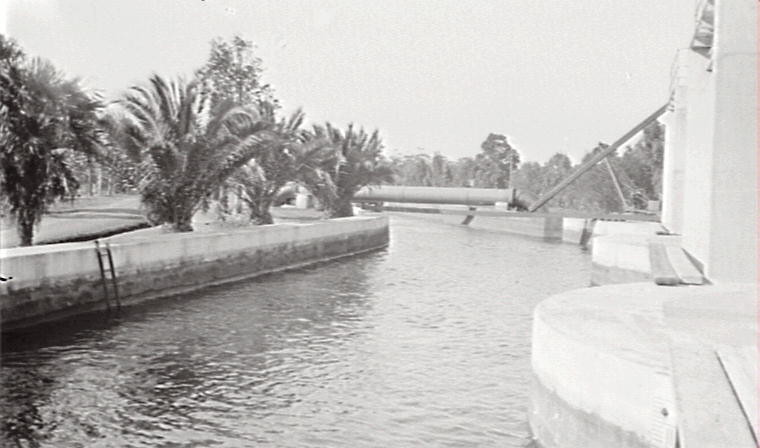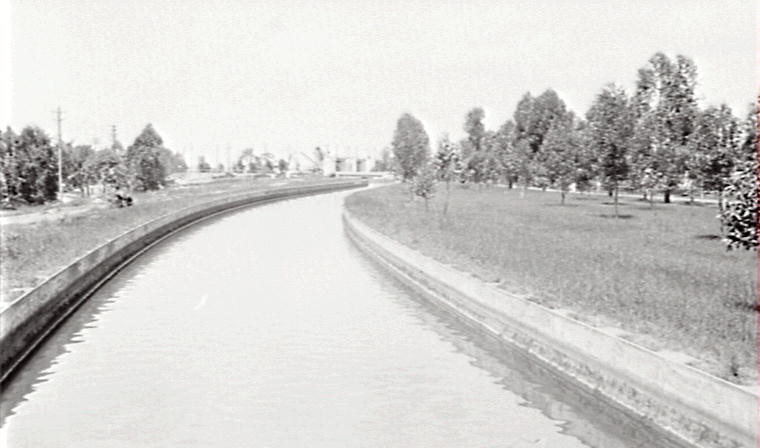The Boothtown Aqueduct
First Shown: 22 March, 2019 on YouTube
The Boothtown Aqueduct was built in 1888 to carry water across a valley from Prospect Reservoir to residents of Sydney. Part of the Lower Prospect Canal, the aqueduct was the longest continuous concrete work of its kind in Australia in the late 19th century and early 20th century.
Aqueduct No. 1A, below Prospect (Contract No. 15):— This great aqueduct commences at 2 miles 249 feet, and ends at 2 miles 1353½ feet. The brickwork extends 1004 feet, with a junction of 50 feet at each end, to the V-shaped canal, and this junction is in rubble in cement. There are 22 spans, 30 feet in the clear, and 33 feet 4 inches from centre to centre. The piers are 3 feet 4½ inches at the head, battering 1 foot in 48 feet ; 17 feet 6 inches overall, with 6 feet openings ; and the springers are of thorough sandstones, 1 foot deep. The piers vary from 38½ feet to 4 feet 6 inch's from the foundation to the springers, and the foundations are of concrete (9 to 1), from 5 feet 9½ inches to 4 feet 5½ inches in width by 18 feet 6 inches. Seven of the deepest piers have plinths, and the remainder batter from concrete, the deepest foundation being 12 feet below the surface of the ground. The abutments are 10 feet, on concrete foundations (9 to 1), the work being carried back one foot in steps of two feet in thickness until the bed of the canal is reached.
The arches are turned in four rings, and a neat string course one foot deep runs the entire length of the work, consisting of dentils and moulded bricks. The side walls are 7 feet 6 inches over the crown of the arch, including a stone coping one foot deep. The pilasters are 3 feet 4½ inches by 1 foot 6 inches, running up to the lower side of the string course, being then reduced to 1 foot 1½ inches to the cope line. The depth of water when running will be 5 feet 6 inches, but the water can rise to 6 feet 7 inches. The spandrils are 2 feet 3 inches, this thickness being carried one foot 6 inches above the arch, and gradually reduced to 1 foot 1½ inches, the bottom width of the canal being 10 feet, and widened to 12 feet 3 inches at the top. The side walls at one end have a 1320-feet curve and at the other a 330-feet curve to join the canal. The spandrils are filled in with 12 to 1 concrete, and the interim of the canal is lined with rendering composed of one to one of sand and cement.
The piers and side walls are set in concrete of 2½ of sand to one of cement, and arches in concrete of one to one of sand and cement. Messrs. Kinchela and Metcalfe are the contractors, but the work has been carried out entirely by Mr. Kinchela, who expects to complete it, with the exception of the stone coping and rendering, in a month. Mr. William Boyd was masonry and brickwork inspector for this contract.
In 1892, the parapet wall of the aqueduct fell into the creek below
The Cumberland Mercury (Parramatta, NSW) Sat 9 Jan 1892 Page 4 -- Early on the morning of Saturday, the 9th of January, sensational rumours were current to the effect that the Prospect dam had given away, and although this statement was not generally credited, it soon became evident that a serious mishap had occurred. It appears that, during the previous night (it is thought, between three and four o'clock, some 200 feet of the northern wall, about 7 feet in height collapsed and fell into the watercourse.
As soon as possible, the water was cut off at the dam, and allowed to drain out the canal, so that the work of restoration might be commenced. For a considerable time an extensive leakage has been going in the brickwork, and on Wednesday the water is said to have been noticed squirting out in large jets, thrown to a considerable distance from the structure. The extra pressure necessary to fill the storage reservoir at Potts' Hill, which is understood contains now, fortunately, some 60 or 70 millions gallons of water, no doubt caused the collapse.
Everything is being done to repair the mischief as quickly as possible. Prompt action was taken by the Minister for Works. Mr. Barley, Engineer-in-Chief for Harbours and Rivers, was at once dispatched to the scene, where he arrived early on Thursday afternoon, and a repairing staff was quickly organised to rebuild the side wall and strengthen the aqueduct walls throughout with the bolts at frequent intervals.




